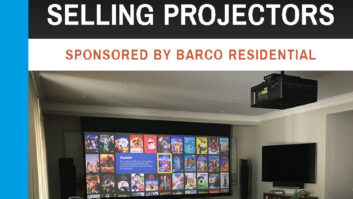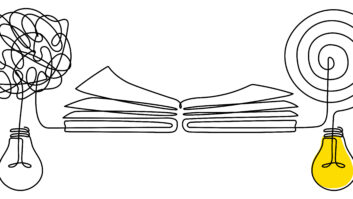Using Reverse Psychology Tactics to Close Your Next Sale

Dave Chace ([email protected]) is president of Training Allies, a CE-focused training firm in Philadelphia.
There’s a popular quote that states, “Happiness is not having what you want, but wanting what you have.” We are a culture consumed with wanting more. Whether it’s more comfort, more convenience, more prestige, or more security, if we can get it, we want more of it. Understanding why people want certain things–or more importantly, what makes people want things more– can make a big difference in how you approach your customers.
Salespeople typically base their presentations on the presumption that the desire to gain something (comfort, convenience, etc.) is the primary motivation behind why customers buy, so they offer benefit statements that paint alluring pictures of how the customers’ lives will be improved with the addition of whatever it is they’re selling. What may be surprising is that while the desire to gain is powerful, research has shown that there is an even more potent influence that governs people’s decisions: the fear of loss. In short, the pain of losing (or losing out) outweighs the pleasure of gaining. Once people have something, they just don’t want to give it up, even if it’s something intangible, like an opportunity.

Shoppers battle the stampeding hoards on Black Friday in fear that they might lose the opportunity to save a bundle. The same logic dictates that your customers will be more reluctant to give up the benefits of the most high-end features after hearing about them first.
The Proof is All Around Us
Why do shoppers battle the stampeding hoards on Black Friday? They fear losing the opportunity to save a bundle. What about the people who sleep on sidewalks for days to be first in line for concert tickets or the new iPhone? They just don’t want to miss out. Ultimately, the gain is whatever they end up with, but the fear of loss is what drove them in the first place.
The perceived difference between gain and loss can heavily influence how a customer rationalizes a purchase and can often determine what (or if) they buy. An interesting experiment that illustrates this point was conducted using salespeople selling replacement windows. In the experiment, half of the sales team told their customers, “If you install these new windows, you will save $1.50 a day in energy costs.” The other half rephrased the statement to say, “If you don’t install these new windows, you will lose $1.50 a day in energy costs.” The team that used the loss-based approach consistently closed more sales.
Leveraging the ‘Power of Loss’
You can leverage the “power of loss” approach with customers by taking most any benefit statement–which typically explains what the customer gains by owning whatever you’re proposing–and reversing it to illustrate what the customer loses by not owning it. For instance, rather than explaining how the right control system will allow them to select any music for any room of the home from one location, explain how not having it will result in a significant lack of convenience–requiring the customer to run from room to room to make adjustments. The first approach has them weigh the benefit of gaining a new convenience that they didn’t have previously, while the latter conveys a sense of giving it away, which is a tougher pill to swallow.
Everybody likes the idea of “having what you want.” Learning the power behind “wanting what you have” can help you take your business to the next level.
>Top-Down Selling
The loss versus gain premise is also at the heart of an effective sales technique called “top-down selling.” The technique entails presenting the top model first and stepping down from there if necessary. The logic is that once the customer acclimates themselves to the benefits of the high-end option, they’ll be more reluctant to give up those benefits by stepping down. However, many salespeople are reluctant to use this approach, fearing the customers’ reaction when presented with the most expensive models or options first. Instead they prefer to offer more modestly priced options first, hoping to step the customer up by explaining what the customer gains by spending more. While this approach may be less intimidating for the salesperson, it is also less profitable. In the great majority of cases, those that present the more expensive options first consistently register bigger sales than those that start in the middle (or the bottom) and try to step customers up. It’s further evidence of how people hate to lose more than they like to gain.
–Dave Chace







